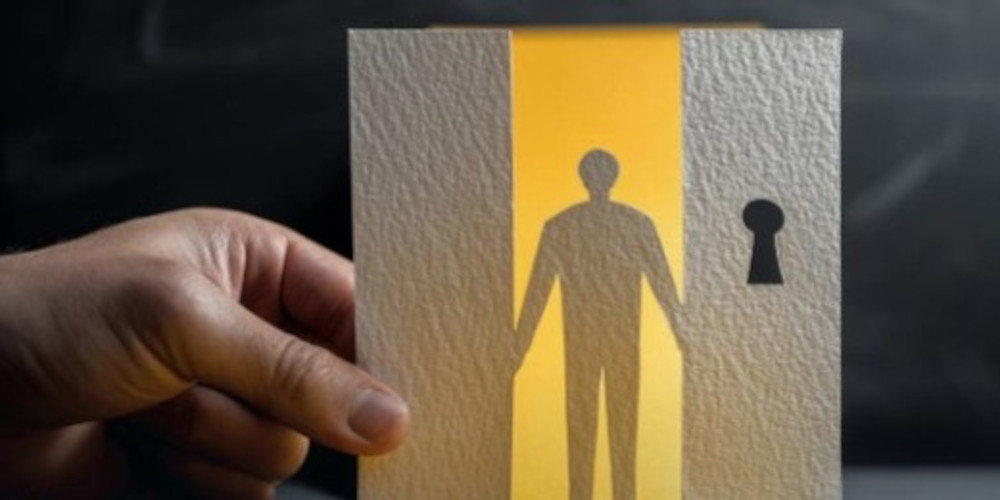The internet has revolutionized how we interact, work, and live. It connects us, educates us, and provides unprecedented access to information and resources. However, this technological marvel also has a dark side. One hidden corner of the internet has become a hub for illegal activities, including drug trafficking, weapon sales, and human trafficking. This hidden corner is known as the dark web.
In this article, we’ll delve into the world of buying drugs online, what the dark web entails, its inherent dangers, how to recognize if someone is using it, and practical advice if you suspect someone is involved.
Why Do People Use the Dark Web?
The convenience of the internet allows us to shop for virtually anything from the comfort of our homes. This convenience extends to illegal activities, such as buying drugs, often without the knowledge of those around them. Purchasers are drawn to the dark web because it offers anonymity, which is not available on the surface web. This anonymity is crucial for those looking to buy or sell drugs without being traced.
What is the Dark Web?
The internet can be divided into three layers: the surface web, the deep web, and the dark web. The surface web, where most of us spend our time, is only a small fraction of the internet. The deep web makes up about 95% of the internet and includes unindexed sites like databases and private networks. The dark web, a part of the deep web, requires special software to access and is home to various illegal activities.
Users access the dark web using specific software like Tor, which allows anonymous browsing and transactions. One of the most notorious marketplaces on the dark web was Silk Road, known for the illegal sale of drugs and other contraband. Despite law enforcement efforts to shut down these markets, new ones continue to emerge.
What Can Be Bought on the Dark Web?
If it’s illegal, chances are it’s available on the dark web. Popular items include:
- Stolen credit card data
- Medical and financial records
- Government secrets
- Counterfeit money and goods
- Fake IDs
- Weapons
- Illegal drugs
Drugs available range from marijuana and stimulants like cocaine to opioids such as heroin and fentanyl. Studies suggest that marijuana accounts for nearly 40% of drug sales on the dark web, followed by stimulants and ecstasy-type drugs.
Is It Safe to Buy Drugs Through the Dark Web?
Despite the perceived safety due to anonymity, buying drugs on the dark web is fraught with risks:
- Lack of Quality Control: Drugs bought online may be contaminated or cut with harmful substances.
- Risk of Overdose: Drugs can be laced with potent substances like fentanyl, increasing the risk of overdose.
- Legal Risks: Despite anonymity, buyers and sellers can still be arrested and charged with drug trafficking.
- Financial Scams: There is a high likelihood of being scammed and not receiving the product paid for.
How Can I Tell if Someone is Using the Dark Web?
If you suspect that someone is engaging in illegal activities on the dark web, particularly buying drugs, it’s important to be vigilant and aware of certain signs. Here are detailed steps and indicators to help you identify potential dark web usage:
1. Search for Tor Software
One of the primary tools used to access the dark web is Tor (The Onion Router). This software allows users to browse the internet anonymously by routing their connection through a series of volunteer-operated servers around the world, effectively masking their IP address.
Steps to Identify Tor Software:
- Check Installed Programs: On a computer, go to the list of installed programs (on Windows, this can be found in the Control Panel under “Programs and Features”; on Mac, in the Applications folder). Look for Tor or any other unusual software that you don’t recognize.
- Search the Hard Drive: Use the search function on the device to look for “Tor,” “Onion,” or other related terms. This can help you find hidden or obscured installations.
- Browser Extensions: Check the web browser’s extensions or add-ons. Tor may not appear directly, but there might be extensions related to privacy and anonymity that could indicate dark web usage.
2. Suspicious Packages
Another red flag is the arrival of suspicious packages. Drugs purchased online need to be delivered, and the presence of frequent, unexplained deliveries can be an indicator of dark web transactions.
Steps to Monitor Packages:
- Observe Delivery Patterns: Note the frequency and regularity of package deliveries. If packages are arriving frequently and the recipient is secretive about them, this could be suspicious.
- Check for Discrepancies: Look at the packaging itself. Packages from dark web transactions often have discreet or unusual labeling. They may lack typical commercial branding and instead have generic, plain packaging.
- Question the Contents: If you have a close relationship with the individual, casually inquire about the contents of the packages. Evasive or defensive responses can be a warning sign.
3. Unusual Financial Activity
Engaging in transactions on the dark web often involves the use of cryptocurrencies like Bitcoin to maintain anonymity. Sudden changes in financial behavior can be a strong indicator of dark web activity.
Steps to Monitor Financial Activity:
- Review Bank Statements: Look for unexplained transactions or withdrawals. Frequent, small withdrawals can indicate attempts to purchase cryptocurrencies without drawing too much attention.
- Track Cryptocurrency Purchases: Check for any transactions related to cryptocurrency exchanges. Buying Bitcoin or other cryptocurrencies can be a precursor to making purchases on the dark web.
- Unexplained Income: Be alert to unexpected increases in income. This could be a sign of selling goods or services on the dark web.
- Monitor Spending Patterns: Pay attention to unusual spending habits, such as high spending on tech gadgets, privacy tools, or other items that might be used to facilitate dark web activities.
Additional Behavioral Indicators
Besides the primary signs, there are other behavioral changes that can suggest dark web usage:
- Increased Privacy Measures: If the person starts using more privacy-focused tools and practices, like VPNs (Virtual Private Networks), encrypted messaging apps, or constant clearing of browser history, it could be a sign.
- Secretive Behavior: Increased secretive behavior, such as quickly closing the computer when someone enters the room, password-protecting devices, or avoiding conversations about their online activities, can be indicative of dark web use.
- Changes in Social Circles: Associating with new, unknown friends who may also be involved in similar activities can be a clue.
What Should I Do if I’m Concerned?
If you suspect someone is involved in buying drugs online, follow these steps:
- Stay Calm: Jumping to conclusions can escalate the situation unnecessarily. Gather all the facts before taking action.
- Open Dialogue: Have a conversation about your concerns. Discuss the risks and dangers of buying drugs online.
- Set Controls: For younger users, set parental controls and privacy filters to restrict access to harmful content.
- Recognize Warning Signs: Be aware of the signs of drug use, such as changes in behavior, secrecy, and physical symptoms.
- Seek Professional Help: Contact a professional who can assess the situation and recommend appropriate support and resources.
The internet’s vast expanse includes dark corners where illegal activities flourish, posing significant risks to individuals and society. Understanding how the dark web operates and recognizing the signs of its use can help protect loved ones from its dangers. By maintaining open communication, setting boundaries, and seeking professional guidance, you can support those at risk and help them navigate away from harmful behaviors. The power of technology should be harnessed for positive change, ensuring the safety and well-being of our communities.



